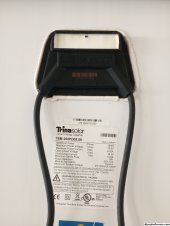95Z28A4
New Member
Hi everyone. I'm new to solar power. I have attempted to educate myself over the last couple months, but have hit a roadblock.
In approximately 5 weeks I will be traveling from Louisiana to New Mexico to convert an International 4700 24ft box truck to an off-grid RV. The conversion will take place off-grid in a New Mexico desert. I will pack everything except lumber in a 18ft cargo trailer (including tools, generator, table saw, air compressor, etc., etc.). I am doing as much work as possible prior to leaving home. The water system is built on 3/4" plywood and will be screwed to an interior wall of the RV. The breaker panels, switches and solar monitoring devices are pre-wired and built into a box constructed of 3/4" plywood and will be screwed to the wall. The solar/charging system will be built in a ventilated box made of 3/4" plywood and screwed to the wall. I can cite several more examples, but I think you get the idea.
The solar/charging system consists of a Victron MPPT 250/100, a Progressive Dynamics PD9180ALV converter, an AIMS Power 3000 watt pure sine wave industrial inverter, a Champion 3500 watt open frame inverter generator, 6 Trina 260 watt solar panels and two Renogy 200 ah Lithium batteries with 200 amp BMS each.
Here's where I'm having the issue. My plan is to parallel 2 sets of 3 panels in series. I don't understand the diode arrangement. I think I should have a total of 6 diodes - 2 blocking diodes (1 for each set of seriesed panels) and 4 bypass diodes (2 diodes per seriesed set).
Is my thinking correct? For the blocking diodes, I plan to use Schottky diodes. Do I use Schottky diodes for the bypass diodes? Or is a different type of diode better suited for this service? What size diodes should I use? I've also read that large diodes produce a lot of heat. I have seen large diodes mounted to a heat sink. Any experience with this?
The specs for the 6 panels are:
Watts - 260
VOC - 38.2 volts
ISC - 9.0 amps
I know this is a lot for my first post, but I have to start somewhere. I thought this would be the right place to increase my knowledge. Thanks.
In approximately 5 weeks I will be traveling from Louisiana to New Mexico to convert an International 4700 24ft box truck to an off-grid RV. The conversion will take place off-grid in a New Mexico desert. I will pack everything except lumber in a 18ft cargo trailer (including tools, generator, table saw, air compressor, etc., etc.). I am doing as much work as possible prior to leaving home. The water system is built on 3/4" plywood and will be screwed to an interior wall of the RV. The breaker panels, switches and solar monitoring devices are pre-wired and built into a box constructed of 3/4" plywood and will be screwed to the wall. The solar/charging system will be built in a ventilated box made of 3/4" plywood and screwed to the wall. I can cite several more examples, but I think you get the idea.
The solar/charging system consists of a Victron MPPT 250/100, a Progressive Dynamics PD9180ALV converter, an AIMS Power 3000 watt pure sine wave industrial inverter, a Champion 3500 watt open frame inverter generator, 6 Trina 260 watt solar panels and two Renogy 200 ah Lithium batteries with 200 amp BMS each.
Here's where I'm having the issue. My plan is to parallel 2 sets of 3 panels in series. I don't understand the diode arrangement. I think I should have a total of 6 diodes - 2 blocking diodes (1 for each set of seriesed panels) and 4 bypass diodes (2 diodes per seriesed set).
Is my thinking correct? For the blocking diodes, I plan to use Schottky diodes. Do I use Schottky diodes for the bypass diodes? Or is a different type of diode better suited for this service? What size diodes should I use? I've also read that large diodes produce a lot of heat. I have seen large diodes mounted to a heat sink. Any experience with this?
The specs for the 6 panels are:
Watts - 260
VOC - 38.2 volts
ISC - 9.0 amps
I know this is a lot for my first post, but I have to start somewhere. I thought this would be the right place to increase my knowledge. Thanks.



